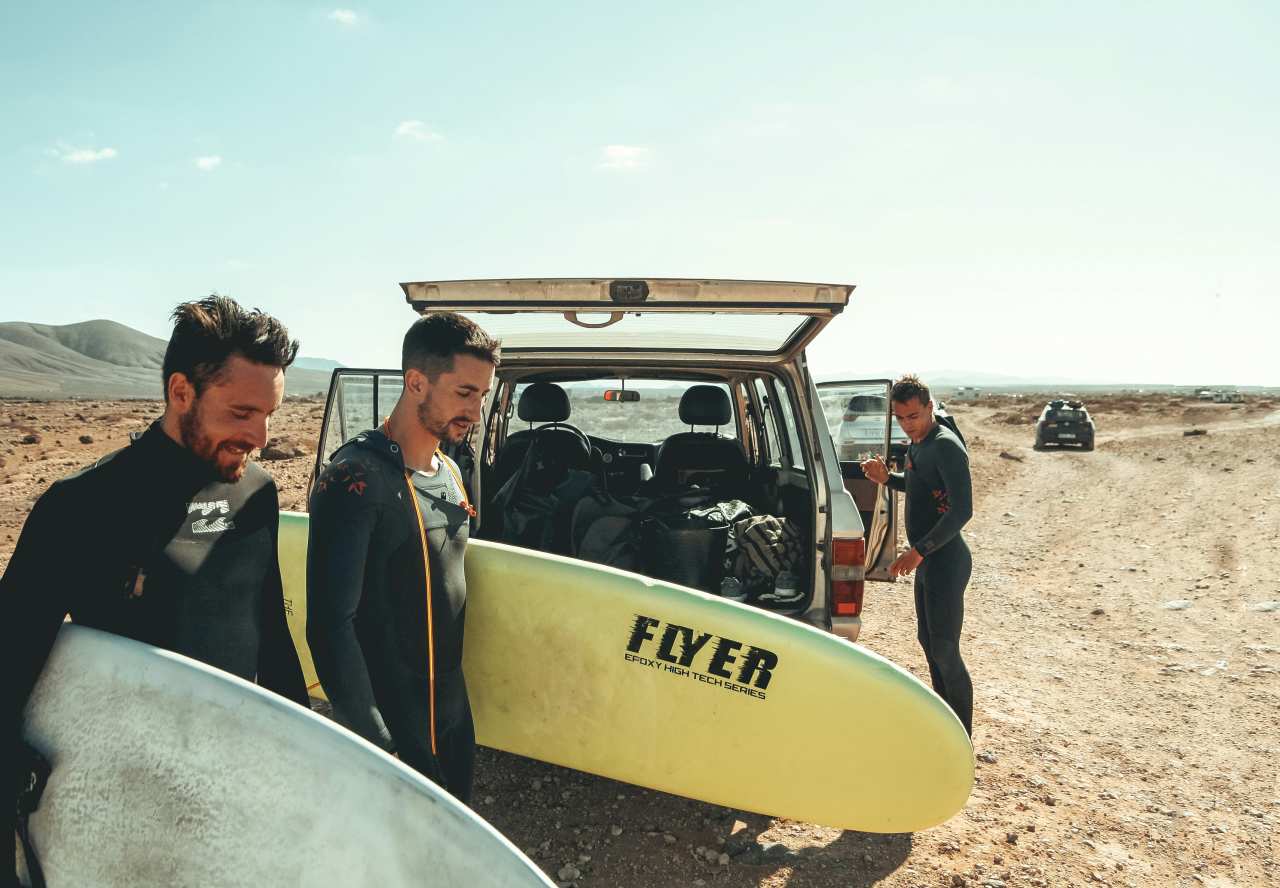Toyota Australia has made a raft of changes to the current LandCruiser 300 Series line-up as part of the latest round of upgrades, but even though the third-from-top Sahara gets a $1119 price rise, it doesn’t receive any updates.
In an increasingly competitive 4WD wagon market – where some car-makers are offering more standard features and tech at lower prices – has the venerable LandCruiser lost its lustre?
Read on.
Price and features – Does it represent good value for the price? What features does it come with? 7/10
7 / 10
The seven-seat LandCruiser 300 Series Sahara has an RRP of $139,310 (excluding on-road costs), up from $138,191.
Our test vehicle had a few extras onboard, though, including optional paint (Silver Pearl for $675), an EBC module, (estimated $235 fitted), an on-road towing kit (estimated $285 fitted), a 12-pin trailer wiring kit (estimated $525 fitted), brake controller wiring kit (estimated $625 fitted), giving it a total of $141,655.
.jpg)
Otherwise, the features onboard a standard Sahara include a 12.3-inch touchscreen (with sat-nav, and wireless Apple CarPlay and Android Auto), a wireless phone charger, four-zone climate control, leather-accented trim, a head-up display, a heated steering wheel, heated and ventilated power-adjustable front seats (with three-position driver's seat memory), heated second-row seats (outboard), and power-folding third-row seats.
There is also cooled centre console storage, a 14-speaker JBL premium audio system and a dual-screen rear entertainment system.
You do get a lot for your cash but, geez, with this price tag, you'd be silly not to expect to.
.jpg)
Design – Is there anything interesting about its design? 8/10
8 / 10
The LandCruiser 300 Series in Sahara spec strikes a nice balance between practicality and prestige.
The Sahara's exterior has a distinctive LandCruiser appearance: chunky but modern-ish and ready to be fitted with Toyota genuine accessories or aftermarket gear.
The Sahara is 4980mm long (with a 2850mm wheelbase), 1980mm wide and 1955mm high. It has a listed kerb weight of 2620kg.
.jpg)
The Sahara’s exterior has that distinctive LandCruiser appearance, but modernised.
Otherwise, there are chrome exterior mirrors and door handles, and dynamic indicators front and rear that add to its overall quietly classy appearance.
The Silver Pearl premium paint on our test vehicle costs $675. Other paint choices include Glacier White, Ebony, Crystal Pearl, Graphite, Merlot Red, Eclipse Black and Dusty Bronze.

Practicality – How practical is its space and tech inside? 8/10
8 / 10
There's a sense of familiarity in the 300’s cabin – it's a functional yet premium space – and it's an easy cabin in which to become instantly comfortable.
The driver gets a heated and power-adjustable steering wheel, and ventilated, heated and power-adjustable seat (with power lumbar adjustment), while the front passenger gets a ventilated, heated and power-adjustable seat.
All seats are leather-accented, comfortable and there are soft-touch surfaces throughout the interior.
The Sahara's 12.3-inch multimedia touchscreen is a main feature in the cabin and it's easy to use, now with wireless Apple CarPlay and Android Auto, and there's a wireless charging pad near the shifter. There are USB-A and USB-C charging points upfront.
The centre console houses a cool box and its lid can be opened from either side, so driver or passenger can access whatever is inside.
And – will wonders never cease? – the Sahara has a powered sunroof (aka moonroof).
.jpg)
There are the usual storage spaces, cupholders, receptacles in the doors for bottles, and myriad other spaces for the stuff that you carry every day.
Second-row seats are in a 40/20/40 split-folding configuration, and the third row is a power-folding arrangement that stows away forwards and flat.
The Sahara's cargo space, when all seven seats are in use, is a listed 175 litres (VDA) behind the third row, increasing to 1004 litres when the second and third row are stowed away.
The rear cargo area has a 220V/100W inverter and four tie-down points.
Under the bonnet – What are the key stats for its engine and transmission? 8/10
8 / 10
The Sahara has the 300 line-up’s 3.3-litre V6 twin-turbo diesel engine, producing 227kW at 4000rpm and 700Nm from 1600 to 2600rpm.
It has a 10-speed automatic transmission, high- and low-range 4WD, as well as a centre diff lock.
What it also has is a handy array of 4WD-focussed driver-assist tech onboard, which includes crawl control, downhill assist, hill-start assist, multi-terrain select, multi-terrain monitor with panoramic view, and active traction control (A-TRC).
It also has what’s called turn assist which, when activated through crawl control, helps to reduce the 300’s turning radius by braking the inside rear wheel – and while it initially seems like a bit of a novelty, this feature may come in very handy if you have to work your way through especially narrow and twisty bush tracks.
Driving – What's it like to drive? 8/10
8 / 10
The Sahara is quiet and well-behaved on-road.
Steering is light and responsive and, with a 11.8m turning circle, this big 4WD feels nimble in the bush, even on tight tracks or pinched approaches to hills or creek crossings.
The V6 offers up plenty of power and torque, and that’s smoothly managed through the 10-speed auto.
Ride and handling are well sorted but, this being a LandCruiser, it’s soft and comfortable, rather than dynamic.
Its suspension – double wishbone, independent at the front and live axle and multi-links at the rear, with coils all-around – manages to soak up most imperfections in the road surface.
The 300 Series' brakes – ventilated discs all-around – brought the big Cruiser to a controlled stop during two emergency-braking scenarios.
.jpg)
The Sahara does miss out on some of the handy 4WD gear featured in the two higher grades (Sahara ZX and GR Sport), namely Toyota's sway-bar-disconnect equivalent electronic Kinetic Dynamic Suspension System (included onboard the GR Sport), front and rear differential locks (GR Sport), adaptive variable suspension (Sahara ZX and GR Sport) and a rear torque-sensing limited-slip differential (ZX).
But ultimately, unless you're really going all-out to break your Cruiser while 4WDing, then the Sahara has enough old-school and new mechanicals and driver-assist aids to get you through the majority of off-road challenges.
Put it this way: we managed all obstacles at our testing ground without any strife.
The V6 produces more than enough power and more torque – up 27kW and 50Nm over the V8 – and that power and torque is consistently delivered across a broad rev range.
The 10-speed auto is a clever match for this engine, making for a smooth pairing, never floundering through ratios in an attempt to find the sweet spot; it’s always pretty close to bang-on.
High- and low-range gearing are solid in the 300 Series, and the Cruiser has a 50:50 centre diff lock.
There’s also a comprehensive suite of driver-assist tech onboard aimed at making your off-roading escapades easier and safer.
.jpg)
The traction control system has been well calibrated and is quite seamless in its application.
The 300's multi-terrain select system includes driving modes such as Sand, Mud and Rock to suit the terrain you're on. These modes adjust various vehicle systems – including throttle control, engine output, and transmission response – to give you the best chance possible of tackling every off-road obstacle safely and in a controlled fashion.
Off-road measurements and angles are decent: ground clearance is 235mm, wading depth is 700mm, and approach, ramp-over and departure angles are 32, 21, and 25 degrees, respectively.
As well as its dialled-in off-road traction control and all of those driving modes, it has handy tech such as crawl control, which works like a low-speed cruise control.
Its tyres are the only real flaw in the 300 Series’ off-road set-up, as its standard Bridgestone Dueler all-terrains (265/65R18) are better suited to dry-track, light-duty 4WDing in good weather than taking on any hardcore 4WDing.
In terms of towing capacity, the 300 Series can legally tow a 750kg unbraked trailer, and the industry-standard of 3500kg braked for large 4WD wagons.
Efficiency – What is its fuel consumption? What is its driving range? 7/10
7 / 10
Official fuel consumption is listed as 8.9L/100km on the combined cycle.
I recorded 12.4L/100km on this test, which is reasonable considering I did a solid half-day of low-range four-wheel driving, book-ended by 100km of highway driving.
The Sahara has an 80-litre main fuel tank and a 30L sub-tank (totalling 110-litre fuel capacity) so, going by my on-test fuel-use figure (12.4L/100km), you could expect a driving range from a full 110 litres of almost 890km.
.jpg)
Safety – What safety equipment is fitted? What is its safety rating? 8/10
8 / 10
All of the 300 Series line-up, except the GR Sport, have the maximum five-star ANCAP safety rating from testing in January 2022.
Safety gear includes 10 airbags, two ISOFIX anchor points, as well as AEB with pedestrian and daytime cyclist detection, active cruise control (all-speed), Lane Departure Alert (with brake to steer), Road Sign Assist (speed signs only), Trailer Sway Control and more.
Off-road driver-assist tech includes crawl control, downhill assist, hill-start assist, multi-terrain select, multi-terrain monitor with panoramic view, active traction control and that aforementioned turn assist.
.jpg)
Ownership – What warranty is offered? What are its service intervals? What are its running costs? 7/10
7 / 10
The LandCruiser 300 Sahara is covered by a five-year/unlimited-kilometre warranty, which is par for the course in the mainstream market. Owners may extend the engine and driveline warranty to seven years by adhering to service schedules.
Service intervals are scheduled for every six months or 10,000km, whichever comes first. Those timings are shorter than the more usual 12 months/15,000km.
Capped-price servicing applies to the first 10 services at a cost of $420 each (correct at time of writing).
Verdict
The Sahara version of the LandCruiser 300 is an impressive large 4WD wagon: refined and comfortable on-road, and it adequately retains that renowned ’Cruiser capability off-road.
It's supremely comfortable seven-seater and has heaps of potential as a touring vehicle, but while there's plenty to like about the Sahara spec, the updated seven-seat GXL (up $2029, to $110,820 excluding on-road costs) offers a more appealing compromise between price and features, especially now that it has a cool box in the centre console, four-zone climate control (previously two), and eight-way power-adjustable driver’s seat (with lumbar support), among other additions.

.jpg)

.jpg)
.jpg)
.jpg)
.jpg)
.jpg)
.jpg)
.jpg)
.jpg)

_0.jpg)

.jpg)
.jpg)
.jpg)



.jpg)